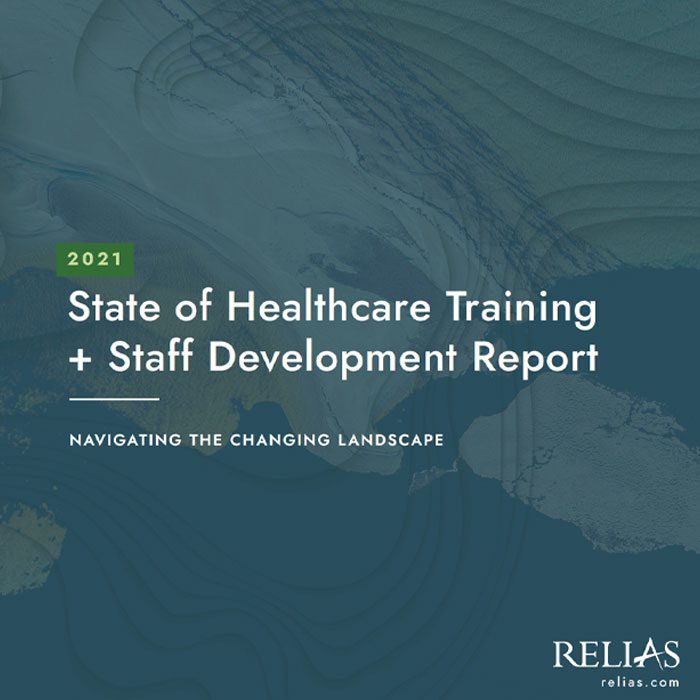Leadership development in healthcare organizations is a critical strategy to promote employee satisfaction and retention. Growing your talent from within helps to create a culture where employees see opportunities and leaders understand the challenges encountered by their team members.
Professional development offerings such as emerging leader programs and clinical ladder programs for nurses can improve staff engagement and retention, notes Trish Richardson, MSN, BSBA, RN, NE-BC, CMSRN, Relias Director of Post-Acute Care Solutions and President-Elect of the North Carolina Nurses Association. “These programs also provide your organization a stronger recruitment message and competitive advantage in today’s tight labor market.”
Leaders who are adept at communicating, providing feedback, and exhibiting cultural sensitivity hit the sweet spot with new and existing hires.
What can leadership development accomplish?
- Improve bottom-line financial performance: Superior human capital management is a powerful predictor of an organization’s ability to outperform its competition.
- Attract and retain talent: Employee retention is 20 times greater at companies with a focus on leadership development. That is a huge difference!
- Increase organizational agility and success in navigating change: When facing an unpredictable business environment, 86% of companies with strategic leadership development programs can respond rapidly, compared with 52% off companies with less mature leadership programs.
Clearly, promoting leadership development in healthcare organizations can produce measurable and far-reaching results. The question is where and how to begin improving your efforts in this area.
Over 83% of organizations say that it is important to develop leaders at all levels, yet only 5% have actually done so. The reason for the disconnect between belief and actions comes from the fact that many leaders don’t know where to start.
It is best to begin with the end in mind. Assess what you ultimately want to accomplish, and then begin identifying actionable techniques that can help you get there.
Your leadership development approach can range from simple to complex. When implementing a leadership development program, pick a model and mold it to fit your organization’s specific needs.
One example of a proven model is Harvard Business Review’s “Three Buckets.” This model makes categorizing leadership traits clear, as you separate the abilities of your employees into three buckets: personal development, team leadership, and execution leadership. Using this model, you can assess how well leaders exhibit your leadership values and then address any leadership gaps.
How to promote leadership development in healthcare
After you’ve identified the focus of your leadership development efforts, consider which tactics to employ to get the program moving in the right direction.
- Make leadership development a learning process, not an event: Too often, organizations fall into the trap of providing a single speaker or event and think they are practicing development. Leadership development works best when viewed as more than merely a program, but instead a culture and a way of life.
- Protect against overload. Build in the expectation that time is needed to reflect, practice, plan, and implement change during the development process.
- Get the team involved. Team members can keep learners focused, accountable, and on track — and point out opportunities for putting learning into action and give feedback on progress.
- Offer reinforcements. People may want to go back and review a topic from their program, reinforce a key lesson, dig deeper into a challenge, or share ideas with coworkers. Offer related or targeted courses, webinars, lunch-and-learns, tools, books, or online learning.
- Build a community of practice or social networks. Some organizations build networks where “graduates” of specific leadership development programs can maintain connections, share tips and experiences, and discuss challenges.
Once the program has been created, be sure to look back and evaluate the program’s impact. Ensure your organization is using follow-up evaluations to be certain that:
- The information being given is having an impact
- Employees feel encouraged to reflect on the impact of development
- Employees understand why development is important to the entire organization
Leadership development isn’t reserved only for upper-level managers. First-line supervisors motivate and coach the employees that are most in touch with your client base. They are also one of your most powerful retention assets. Leadership development programs that accurately assess gaps and provide development opportunities are good for us all.

Healthcare Training and Staff Development Report
As you strive to understand how to strategically develop your leaders and improve your workforce engagement and retention, explore the trends and insights gleaned from healthcare respondents in our training survey report.
Download the Report →





